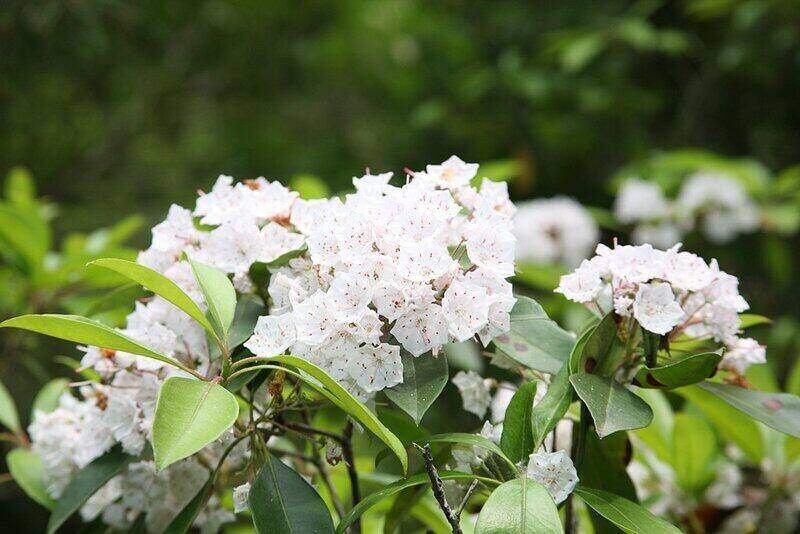10 Best Native Plants for Richmond, VA
BY RELA CATUCOD | MAY 8TH, 2023 | LANDSCAPING, RICHMOND, VIRGINIAVirginia homeowners are no stranger to the natural beauty of the Old Dominion State. One of the best ways to complement the scenic landscapes in Virginia’s capital region is by planting the best native plants for Richmond, which provide numerous benefits to both the environment and local wildlife.
Why plant native plants in Richmond? Here are a few reasons:
- They are adapted to local conditions, making them more resistant to pests and diseases without the need for pesticides.
- Native plants support local pollinators, such as bees, butterflies, and hummingbirds, which in turn help maintain a healthy ecosystem.
- They require less water and maintenance compared to non-native plants, making them a great choice for homeowners looking for low-maintenance landscaping ideas.
Choosing to plant native plant species in your garden ensures you’ll create a stunning and vibrant environment for your family and the local community.
In this article, we’ll cover:
- Virginia Bluebells
- Red Columbine
- American Witchhazel
- Sweetbay Magnolia
- Swamp Azalea
- Butterfly Weed
- Mountain Laurel
- Flowering Dogwood
- Wild Hydrangea
- Coral Honeysuckle
- How to Choose Native Plants for Your Richmond Landscape
- FAQ About Richmond Native Plants
- Where to Find Native Plants in Richmond
Best Native Plants for Richmond
1. Virginia Bluebells (Mertensia virginica)
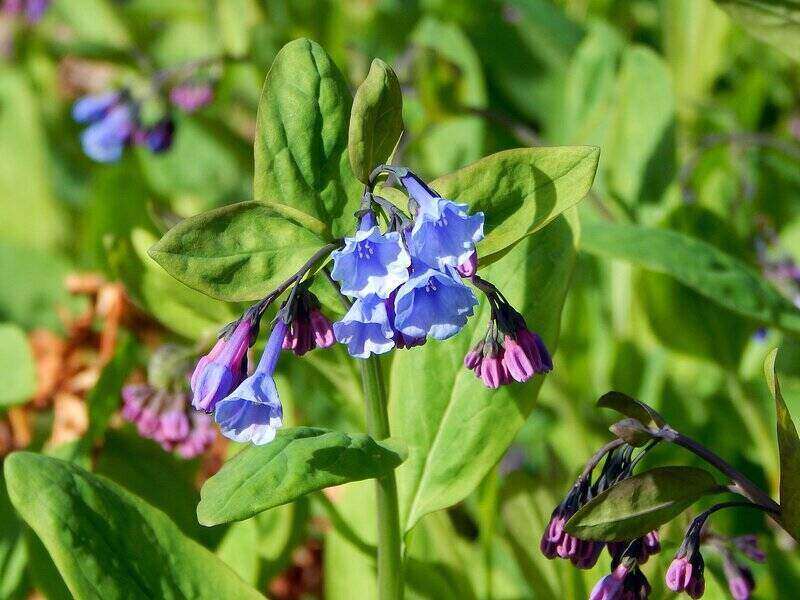
Virginia bluebells are charming woodland wildflowers that are perfect for shady areas in your home garden. They display delicate bell-shaped, blue-violet blooms that create a serene atmosphere. As a spring ephemeral, Virginia bluebells bring early-season color and joy to your garden, attracting pollinators such as bees and butterflies. Their graceful presence adds a touch of Richmond’s natural beauty to your outdoor space.
Plant type: Herbaceous
USDA Hardiness Zone: 3 to 8
Sun: Partial shade to full shade
Soil: Chalk, clay, loam, sand; acid, alkaline, neutral; moist but well-drained soils
Duration: Perennial
Fragrance: Light and Sweet
Bloom time: March to June
Water needs: Moderate
Mature height: 1 to 2 feet
Potential hazards: Toxic to humans, dogs, horses, and cattle; can be fatal when consumed in large amounts
Maintenance: Low
2. Red Columbine (Aquilegia canadensis)
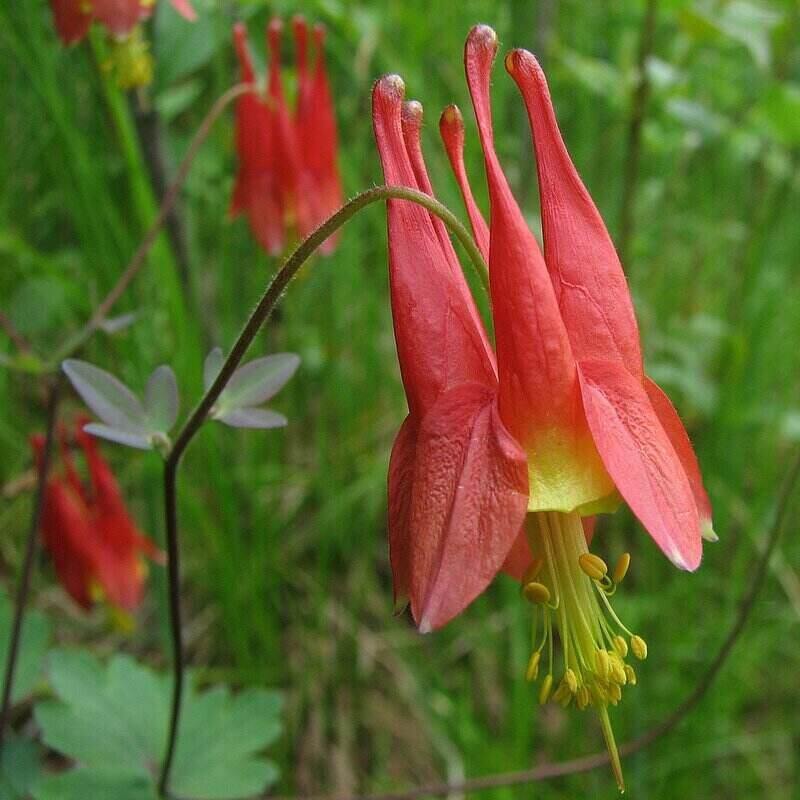
Whether you’re admiring the landscape along the Virginia Capital Trail or in your own backyard, the red columbine is a showstopper. Its vibrant red and yellow flowers add a touch of bold color to your garden, attracting hummingbirds and butterflies.
This native perennial is a delightful addition to any Richmond garden, thriving in woodland edges and rock gardens. As a low-maintenance plant that tolerates various soil types, red columbine makes it easy to add a splash of color to your outdoor haven.
Plant type: Herbaceous
USDA Hardiness Zone: 3 to 8
Sun: Full sun to partial shade
Soil: Clay, silt, or sandy soil that’s well-drained, moist, dry-ish
Duration: Perennial
Bloom time: February to July
Water needs: Weekly or whenever soil is completely dry
Mature height: 1 to 3 feet
Potential hazards: Moderately flammable/risk of fire
Maintenance: Low; deadhead blooms as needed, cut back in late summer
3. American Witch Hazel (Hamamelis virginiana)
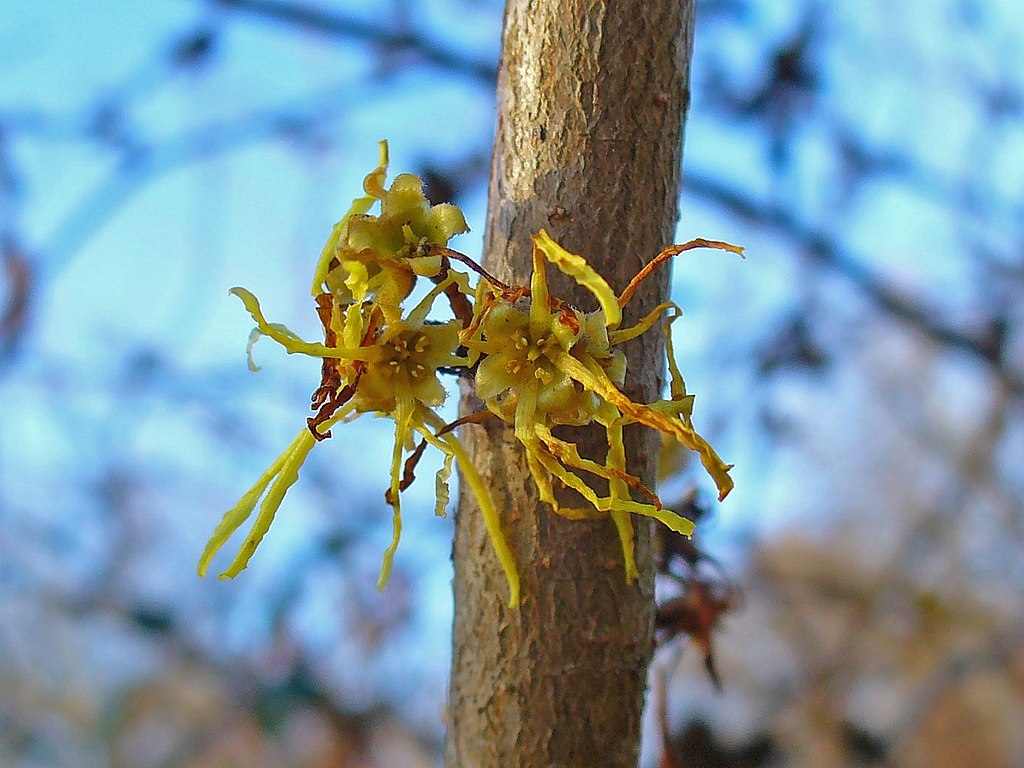
If you’ve ever visited the Lewis Ginter Botanical Garden in Richmond, you may have encountered the enchanting American witch hazel. This large, deciduous shrub features fragrant, ribbon-like yellow flowers that bloom in late fall to early winter when most other plants have lost their leaves. Witch hazel not only adds year-round interest to your garden but also provides essential habitat for birds and other wildlife.
Plant type: Shrub/Tree
USDA Hardiness Zone: 3 to 8
Sun: Full sun, partial shade, full shade
Soil: Clay, loam, sandy soils
Duration: Perennial
Fragrance: Sweet
Bloom time: September to December
Water needs: Moderate
Mature height: 15 to 20 feet tall
Potential hazards: Large doses may cause liver problems in humans
Maintenance: Low; prune in spring to control its shape and size
4. Sweetbay Magnolia (Magnolia virginiana)
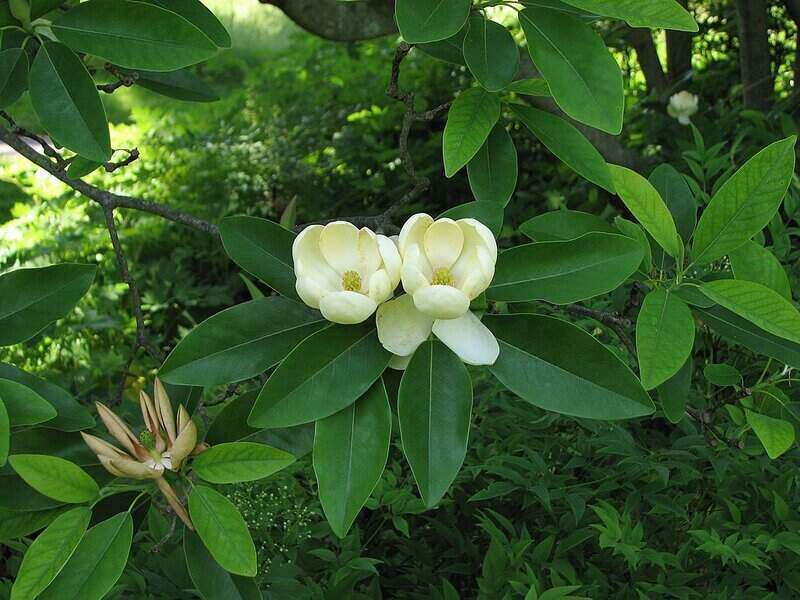
Sweetbay magnolia is a magnificent native perennial that looks right at home in the scenic gardens of Richmond’s historic neighborhoods. This medium-sized, semi-evergreen tree showcases creamy-white, lemon-scented flowers in late spring and early summer.
Its elegant, glossy leaves provide a lush backdrop for other plants in your landscape. As a versatile and adaptable species, the sweetbay magnolia thrives in both full sun and partial shade, making it a beloved choice for Richmond gardens.
Plant type: Shrub/Tree
USDA Hardiness Zone: 5 to 10
Sun: Full sun to partial shade
Soil: Clay, loam, sandy soils
Duration: Perennial
Fragrance: Lemon
Bloom time: April to July
Water needs: Moderate
Mature height: 10 to 35 feet
Maintenance: Low
5. Swamp Azalea (Rhododendron viscosum)
Swamp azalea produces fragrant, trumpet-shaped flowers in shades of pink and white that are sure to captivate visitors to your garden. This native shrub is an excellent choice for wetter areas of your landscape, such as rain gardens or pond edges, where it can help prevent erosion. This stunning plant adds a touch of Southern charm to your outdoor space while supporting local pollinators.
Plant type: Shrub
USDA Hardiness Zone: 3 to 9
Sun: Full sun to partial shade
Soil: Well-draining, moist soil; loam and sand
Duration: Perennial
Fragrance: Spicy and Sweet
Bloom time: May to August
Water needs: Moderate
Mature height: 5 to 15 feet tall
Potential hazards: Toxic to humans and animals if ingested
Maintenance: Low
6. Butterfly Weed (Asclepias tuberosa)
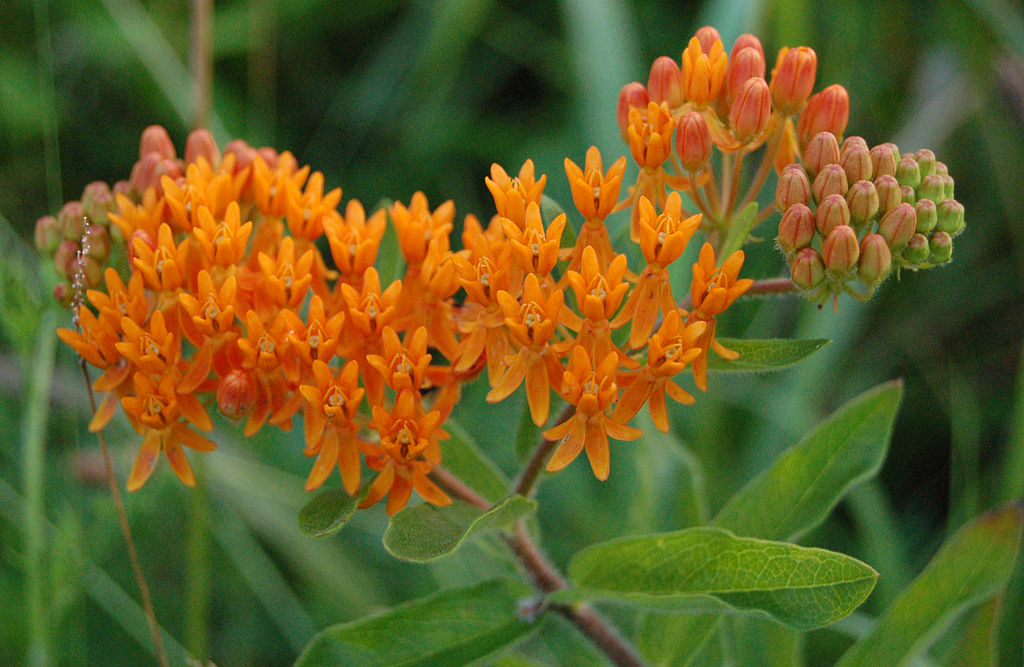
Butterfly weed is a favorite among both butterflies and homeowners alike. With its brilliant orange flowers and upright growth habit, Butterfly Weed makes a bold statement in any Richmond garden. In addition to its beauty, this drought-tolerant plant is an essential host for Monarch butterflies, helping to support their declining populations while adding a touch of beauty to your landscape.
Plant type: Herb
USDA Hardiness Zone: 3 to 9
Sun: Full sun
Soil: Clay, loam, sandy soils
Duration: Perennial
Fragrance: Vanilla
Bloom time: May to September
Water needs: Low
Mature height: 1 to 2 feet
Potential hazards: Toxic to humans, dogs, cats, and livestock
Maintenance: Low
7. Mountain Laurel (Kalmia latifolia)
Mountain laurel is a perennial shrub often found in forests and mountain tops. It features intricate, cup-shaped flowers in shades of pink and white that bloom in late spring. Its leathery, dark green leaves provide year-round interest, and its dense growth habit makes it an excellent choice for hedges or privacy screens. Bring the charm of Virginia’s mountainous landscapes to your Richmond garden by planting mountain laurel.
Plant type: Shrub
USDA Hardiness Zone: 5 to 9
Sun: Partial shade
Soil: Cool, moist rocky or sandy soils
Duration: Perennial
Bloom time: April to July
Water needs: Low
Mature height: Up to about 35 feet tall when growing as a tree; usually shrub-like and much shorter
Potential hazards: Highly toxic and may be fatal to humans if eaten
Maintenance: Low
8. Flowering Dogwood (Cornus florida)
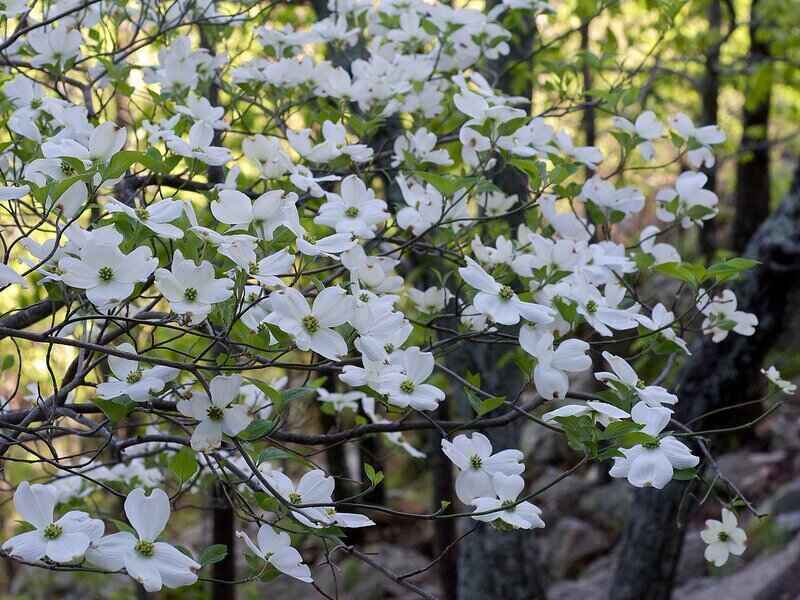
As Virginia’s state tree, the flowering dogwood holds a special place in the hearts of Richmond residents. With its showy, white or pink blooms in spring, this native tree is a beloved sight in historic neighborhoods and public parks alike.
In addition to its stunning springtime display, the flowering dogwood offers year-round interest with its red berries in the fall and vibrant red-purple foliage in winter. By incorporating this elegant tree into your landscape, you’ll be celebrating Virginia’s rich heritage while creating a garden retreat that attracts birds and other wildlife.
Plant type: Tree
USDA Hardiness Zone: 5 to 9
Sun: Grows best in partial shade but can tolerate full sun
Soil: Organically rich, moist, acidic soils
Duration: Perennial
Fragrance: Sweet floral scent
Bloom time: March to June
Water needs: Moderate
Mature height: 15 to 30 feet, sometimes reaching up to 40 feet
Potential hazards: Fruit is poisonous to humans
Maintenance: Low
9. Wild Hydrangea (Hydrangea arborescens)
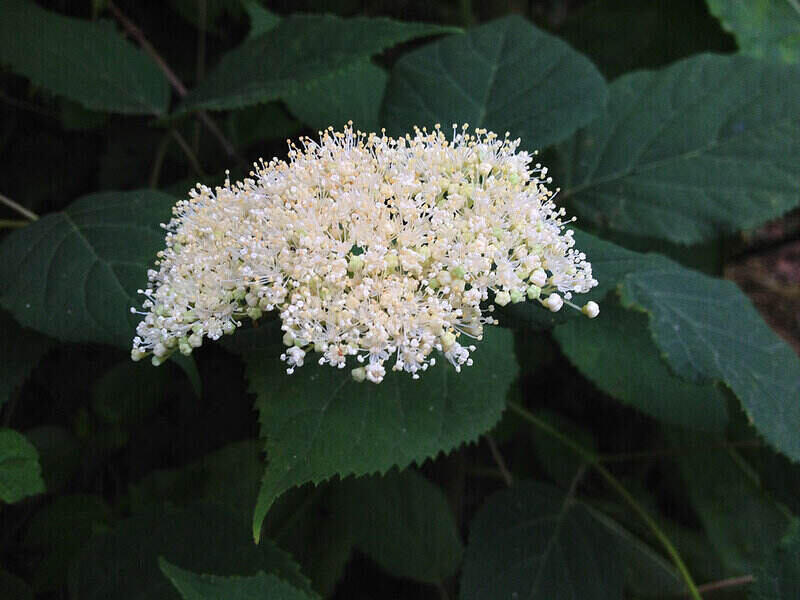
Wild hydrangea produces clusters of creamy-white flowers throughout the summer, creating a delightful contrast against its deep green foliage. Wild hydrangea is a low-maintenance and adaptable plant and it’s the perfect addition to woodland gardens or mixed borders in your Richmond landscape.
Plant type: Shrub
USDA Hardiness Zone: 3 to 9
Sun: Partial shade
Soil: Rich, well-draining, moist soils
Duration: Perennial
Fragrance: Fruity
Bloom time: May to August
Water needs: Moderate
Mature height: 3 to 5 feet tall
Potential hazards: May cause dizziness, chest pain, gastrointestinal distress if ingested
Maintenance: Low
10. Coral Honeysuckle (Lonicera sempervirens)
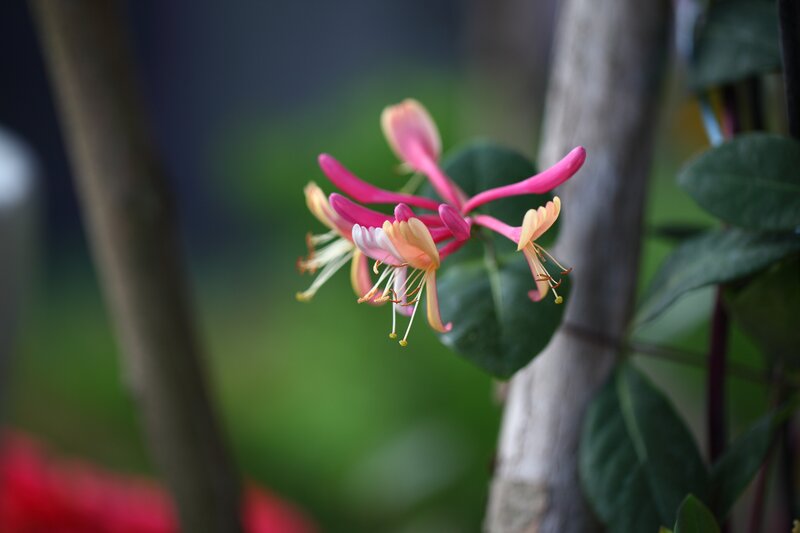
Coral honeysuckle features vibrant, trumpet-shaped, red-orange flowers that attract hummingbirds and butterflies to your garden. Its twining habit makes it a versatile choice for covering fences, trellises, or arbors, adding vertical interest and lively color to your landscape. With its long bloom period, coral honeysuckle adds a touch of artistic flair and natural beauty to any Richmond garden.
Plant type: Vine
USDA Hardiness Zone: 4 to 9
Sun: Full sun to partial shade
Soil: Acclimates to many soil types; clay, sand, loam, slightly acidic, well-drained soils
Duration: Perennial
Bloom time: March to June
Water needs: Moderate
Mature height: 15 to 20 feet
Potential hazards: Mildly toxic to dogs, cats, and humans
Maintenance: Low
How to Choose Native Plants for Your Richmond Landscape
Interested in planting native plants in your garden? To properly choose the right plants for your Richmond landscape, consider the following factors:
- Available sunlight: Assess the sunlight in your garden and choose plants that thrive in full sun, partial shade, or full shade, depending on the conditions of your landscape.
- Soil type: Evaluate the texture, pH, and drainage of your soil, as different plants have varying soil requirements for optimal growth.
- Moisture levels: Determine if your landscape has wet, dry, or average moisture conditions, and select plants accordingly.
Additionally, consult resources like the Virginia Native Plant Society (VNPS) and plantvirginianatives.org for expert advice and recommendations tailored to your specific region. Richmond falls within USDA Hardiness Zone 7, so it’s essential to select plants that are well-suited for this zone.
FAQ About Richmond Native Plants
Can I mix native and non-native plants in my Richmond garden?
Yes, you can mix native and non-native plants in your garden. However, it is essential to select non-native plants that are compatible with Richmond’s climate and aren’t recognized as invasive in the region. Furthermore, prioritize planting native plants in your garden to promote biodiversity and support local wildlife.
Can I grow native plants in containers or small spaces in Richmond?
Yes, many native plants can be successfully grown in containers or small spaces in Richmond. When selecting native plants for container gardening or limited spaces, consider species with smaller growth habits or those that can be pruned to maintain a compact size.
How do I maintain native plants in my Richmond garden?
Native plants in Richmond are generally low-maintenance but still require basic care for optimal health and appearance. Ensure proper watering during dry periods or establishment phases, prune to remove dead or damaged branches and maintain shape, and apply organic mulch to retain soil moisture, suppress weeds, and regulate temperature. Research specific care requirements for each native plant species to tailor your approach accordingly.
What plants are native to Virginia’s Capital Region?
Plants native to Virginia’s Capital Region include:
- Black Oak
- Willow Oak
- Sassafras
- Common Partridge-pea
- Smooth Oxeye
- Arrow Arum
- Wild Pink
- Red Chokeberry
Where to Find Native Plants in Richmond
Incorporating native plants into your landscape offers numerous benefits, such as promoting local ecosystems, supporting pollinators, and providing low-maintenance landscaping options. To achieve an even more stunning garden, consider integrating the best grass types for your region alongside native plants.
If you’re ready to include native plant species in your outdoor oasis, visit the VNPS website to locate the closest native plant nursery to you.
For a lush, green landscape year-round, let WikiLawn connect you with local lawn care professionals who can expertly handle pruning, trimming, mowing, and edging to keep your yard looking its best.
Main Photo by: Zeynel Cebeci / Wikimedia Commons / CC BY-SA 4.0
